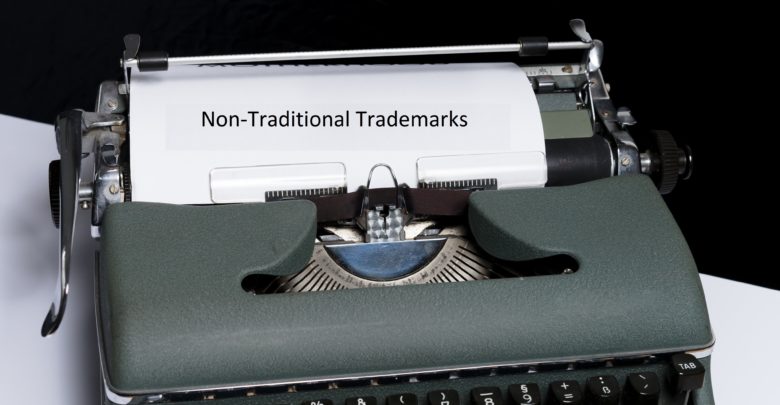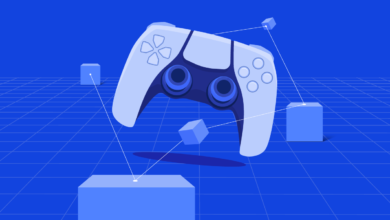Intellectual Property
Non-Traditional Trademarks: Keeping Up With The Times

When a product comes into existence and is made available in the market, it comes along with a particular design color, packaging, shape smell, or in some cases a sound too. Such elements have the ability to build an image in the minds of consumers. The success rate of this would later translate into how popular that brand would be. Building a brand image doesn’t come easy, considerable effort and work go into making it stand out in the market. Therefore, there exists a concept of a trademark that technically protects the goodwill of the brand being exploited by any other party. As the same is garnered by the company through years of marketing and designing strategies. Since its inception trademarks were known to have included a name, phrase, word, design, symbol, logo, symbol, image, numerals, or a combination of these elements. [1]
However, in today’s era due to development in technology and competition in the market, it has been known that “almost anything at all that is capable of carrying meaning” can function as a trademark.[2] Therefore, in recent times there have been trademarks originating from sounds, shapes, smells, tastes, and textures, etc and these have been termed as non-traditional trademarks. And the reason they are being trademarked is even though they are not visually perceptible but they carry a certain level of distinctiveness that appeals to the consumers and helps them identify the origin.
Treatment In Foreign Jurisdictions
Out of all the countries, the USA has been known to take the most liberal approach when it comes to registration of non-traditional marks. Governed by the Lanham Act of 1946 which although does not include unconventional trademarks explicitly but at the same time does not bar them too. The act does entail Graphical representation, a major hurdle in the registration process, as mandatory for trademark applications. It simply requires any mark that is non-visual in nature to have a detailed verbal description to be considered for registration.[3] The American courts also place reliance on the Doctrine of Functionality[4] while assessing non-traditional trademarks. The doctrine precisely prevents applications for such trademarks that have a direct nexus to the good or is an essential feature of the goods it is applied to. That is, if a product elements such as shape, color, or design are needed to improve the ability of a product to sell, then that feature is not protected by trademark law. This was introduced to sustain the competitiveness in the market by allowing newcomers to use elements in their products that the consumers demand. The Supreme Court in Wal-Mart Stores Inc v Samara Bros Inc[5]. had distinguished between product design and packaging and reiterated that shape trademarked only if it has acquired secondary meaning. The most popular examples of such trademarks have been the shape trademark of the coca-cola bottle known amongst consumers across the globe.
In the UK, the legislature is seemingly more strict. A trademark is defined under section 1(1) of the Trade Marks Act 1994 as consisting of
“any sign capable of being represented graphically particularly words, including personal names, designs, letters, numerals, the shape of goods or of their packaging, provided such signs are capable of distinguishing the goods of one undertaking from those of other undertakings.”[6]
The Europian court has made a Graphical representation of all non-traditional marks mandatory. In Sieckmann vs. Deutsches Patent-und Markenamt[7] the criteria for graphical representation were laid down to be that the representation should be “clear, precise, self-contained, easily accessible, intelligible, durable and objective.”[8]
In the EU, a trademark can be protected by registering it as a Community trade mark (CTM) in the Office for Harmonization in the Internal Market (OHIM). It also allows registering several types of signs, including 3D marks. With respect to shapes, Section 3(2) of the Trademark Act,1994 in the UK lays down certain guidelines for shape trademark as shapes; resulting from the nature of the goods themselves, of goods which are necessary to obtain a technical result, or which gives substantial value to the goods.[9]
In Koninklijke Philips Electronics NV v. Remington Consumer Products Ltd.,9[10] it was held that a mark(including shapes) cannot be excluded from registration just because it is prima facie not an indicator of product’s origin. The determination as to registration depends upon the assessment of distinctiveness that the mark portrays. Such can be ab initio or assessed through the manner of its use in trade.
Trademark legislation in India
In India, according to the definition of trademarks the Trademark Act, 1999 (hereinafter, referred to as the Act)says that:
“Trademark means a mark capable of being represented graphically and which is capable of distinguishing the goods or services of one person from those of others and may include the shape of goods, their packaging, and combination of colors.”[11]
It can be said that the non-traditional marks are covered under this definition of trademarks. The Act draws inspiration from both the US and the UK trademark laws.as on one end it follows the functionality doctrine and on the other, it has made graphical representation mandatory.
Graphical representation has been defined in the Trade Mark Rules, 2002 (hereinafter referred to as ‘the Rules’) as a representation of a trademark for goods or services in the paper form[12] and should be durable and satisfactory[13].
Section 2(1)(m) of the Act has defined marks to consist of shapes and packaging of goods or a combination of colors. Rule 29(3) of the Rules allows for three-dimensional marks too. Further, Section 9(3) of the Act follows the UK Act to make exceptions to the registrability of shape if it ekes out from the nature of goods, or is for obtaining a technical result or if it gives substantial value to the good.
The Indian subcontinent was known to be not that friendly for registering unconventional marks however with the introduction of Trademark rules,2017 this perception was transformed greatly as they allowed for marking of sound and colors.[14] This change was primarily due to India being a signatory in the TRIPS agreement[15].
Uncertainty Around Sound, Taste, And Smell Marks.
Given the growing acceptance of unconventional marks and their inclusion in legislation around the globe, the difficulties don’t end there. Even within unconventional marks, there are certain marks that are considerably easier to register e.g. Shapes and a combination of colors. However, marks based on sound, smell, and taste are still difficult to register especially in jurisdictions requiring graphical representation.
SOUND MARKS
The sound marks can be graphically represented with the help of musical notations and written descriptions. But the ECJ in Shielf Mark BV v. Joost kist h.o.d.n Memex[16] held that description using written language did not fulfill the requirement of graphical representation. The same shall only be accepted when the sound is shown as a stave divided into measures and musical notes being filled in a form with the registry. Still, the court didn’t cover other sounds that could not be described through musical notes.
Such uncertainty still led to several trademark claims like the one made by manufacturers of Harley Davidson for its engine roar as being distinctive.[17]The claim was refuted by other motorcycle manufacturers who described how such sound can also be achieved by them.
The practice of using audio clips by some countries like the USA presents a much plausible solution to the graphical representation problem. Probably why high no. of sound, marks are witnessed in America. Some popular ones being the sound of Homer Simpson saying “D’oh! owned by Twentieth Century Fox, the rhythmic breathing sound of Darth Vader by LucasFilm or the roar of a lion’ by Metro-Goldwyn-Mayer Corporation, etc.[18]
India has had started its journey of sound trademarks with ICICI bank being the first Indian entity obtaining registration for its jingle[19] and Yahoo’s pronunciation as ‘Yodel’ graphically represented through musical notes[20].
SMELL/SCENT MARKS
The issue of representation becomes almost impossible in the case of fragrances. In Ralf Seickman v. German Patent Office, the registration was rejected by the European court stating that it cannot be put on paper.The issue was whether the smell mark being defined ‘balsamically fruity scent with hint provided of cinnamon’ fulfills the representation criteria. To this ECJ held that along with graphical representation it needs to be clear and precise and be exclusive.
The issue arose on the same tenets even in the case of R v John Lewis[21], where the court refused an application for a scent described as ‘the smell, aroma or essence of cinnamon’ for furniture stating that verbal description did not make it clear.
The major issue with such rulings is ignorance of the fact that olfactory senses are subjective. How a person perceives and describes a scent differs greatly. And so it is impossible to represent it graphically.
The case Re Celia Clarke[22], decided by the US court allowed for a smell trademark for sewing thread and embroidery yarn, described as of ‘a high impact, fresh floral fragrance reminiscent of Plumeria blossoms’. The court justified such registration by comparing scents to colors and making a distinction between fragrances of perfumes and fragrances which are not an inherent attribute of a product. This ignited a huge uproar on uncertainty around the subjective requirements of unconventional trademarks.
Following the same UK rejected an application by Chanel to register its popular fragrance No. 5 as a mark on the logic of it being the very essence of the product. However, a Dutch company that described the smell of its tennis balls as ‘the scent of newly mown grass’ was successful because it apparently was distinctive enough.[23]The Indian legislation is particularly silent on such registrations and does not recognize them.
TASTE MARKS
the functionality test hits the taste mark unabashedly. Even non-generic flavors are hard to register as they will serve a pivotal role in the consumer experience of that food item. But sometimes even satisfying the functionality test isn’t enough. For eg. In the case of Eli Lilly’s case[24] where the applicant attempted to register the artificial flavor of strawberry for its pharmaceutical products but was dismissed on the ground that every pharmaceutical company does that to decrease the bitterness of tablets. Similarly, in re N.V. Organon, the Trademark Trial and Appeal Board (TTAB) denied the orange flavor of pills.
This has evolved in an unsaid principle amongst the trademark community that taste marks can be attained for taste only for products not meant for human consumption.
Food joints cannot even think about marking the taste of their iconic dishes and the same was made clear in an interesting case New York Pizzeria Inc V Ravinder Syal where the pizzeria group claimed that a knockoff restaurant called Gina’s Italian Kitchen was using their recipes. Also that the taste of their pizza was so unique that if it even came court of the knockoff restaurant’s kitchen would give people the taste of Pizzeria’s pizza[25].The court unequivocally stated that marking the taste of pizza is impossible and that such arbitrary claims be avoided in the future.
Policy Concerns Over Unconventional Trademarks.
One of the leading concerns has been the graphic representation and the lack of clarity in its guideline. The legislators are skeptical in broadening its ambit in the fear of marking sounds and smells prohibiting equal opportunity to future sellers.
Another concern has been the marking of single colors. Popularly registering a combination of colors that are distinct to the packaging of the products is acceptable and easy.like the combination of colors red and white was accepted as a trade dress by the Indian judiciary in the case of Colgate Palmolive Company v. Anchor Health & Beauty Care Pvt. Ltd[26].It was increasingly concerned while registering the purple color (Pantone 2865C)used by Cadbury for packaging its milk chocolates in 2012.
This because the authorities are concerned about “color depletion” which would result from the registration of single colors and this in turn limit traders’ in terms of packaging and advertising.[27]
In Libertel Groep BV v. Benelux Trademark Office, the court rejected single color combinations on the same grounds by using examples such as Brunswick Corp. v. British Seagull Ltd[28] where Federal court barred the mark of a shade of black.
Conclusion
The Indian trademark laws, especially with the addition of 2017 Rules, have come a long way. But the fact that it has hardly had few unconventional trademark registrations speaks volumes about unclear laws and difficulty at the registration end. India can easily follow the precedent of the USA and take the step of doing away with the requirement of Graphical representation and build a more inclusive environment for trademarks. With the country eyeing on being a manufacturing hub, instilling confidence in its innovators and the marketeers through a liberal policy framework seems to be of importance. If India takes a leap of faith in setting its own policy norms in terms of unconventional trademarks ahead of other jurisdictions it may ensure an inflow of indigenous brands dominating the global marketplace.
[1] Kerly D M, Law of Trade Names and Trademarks, Sweet and Maxwell,2005, at 12. [2] Qualitex Co. v. Jacobson Products Co., 514 U.S. 159, 162 (1995). [3] Harsimran Kalra, Unconventional trademarks: the emergent need for a change, Indian Law Journal,(2007) http://www.indialawjournal.org/archives/volume4/issue_1/article_by_harsimran.html. [4] Supra [2], 164–165. [5] Wal-Mart Stores Inc v Samara Bros Inc, 529 US 205, 2130214,(2000). [6] Trade Marks Act, 1994, §26. [7] Sieckmann v. Deutsches Patent-und Markenamt, C-273/00, E.T.M.R 37,(2003). [8] Dr. Ralf Sieckmann v. Duetsches Patent und Markenamt ,Case C (273/00). [9] Anand Ruth, Look-alikes under the new UK Trade Marks Act, Trademark Reporter, 86,(1996) at 142. [10] Case C-299/99, Koninklike Philips Electronics NV v. Remington Consumer Products Ltd., 2 C.M.L.R. 52, 39–40 (2002). [11] Trade Marks Act, 1999,§ 2 (zb). [12] Trade Mark Rules,2002,Rule 28. [13] id , Rule 30. [14] Trade Mark Rules,2017, Rule 26. [15]The TRIPS Agreement,(1995) available at https://www.wto.org/english/tratop_e/trips_e/intel2_e.htm. [16] Shield Mark BV v Joost Kist hodn Memex, Case No. C- 283/01. [17] Honda AG v Harley-Davidson Inc, 108 F 3d 1393 (Fed Cir 1997); Harley-Davidson Inc v William Morris D/B/A Bill’s Custom Cycles, 19 F 3d 142 (3d Cir 1994); Harley-Davidson Inc v Selectra International Designs, 861 F Supp 754, 754 (E D Wis 1994). [18] Metro-Goldwyn-Mayer Lion Corp., Reg.No.1,395,550 [19] Vaibhav Aggarwal, ICICI Bank gets its corporate jingle trademark registered, Rupee Times, March 14,2011; available at http://www.rupeetimes.com/news/car_loans/icici_bank_gets_its_corporate_jingle_trademark_registered_5058.html. [20] Peter Ollier, Yahoo Yodels into India’s TM Registry,183 Managing Intellectual Property,14 (2008). [21] R v John Lewis, RPC 28,(2001). [22] USPQ 2d1238 (TTAB)(1990). [23] World Trade Organisation,Smell,Sound and Taste and Getting a sense of non-traditional marks Taste, (2009), accessible at https://www.wipo.int/wipo_magazine/en/2009/01/article_0003.html. [24] ICSID Case No. UNCT/14/2,March 16, 2017. [25]Steve Baird, When is a flavor trademark possible, Duetsblog, oct. 27, 2014, accesible at https://www.duetsblog.com/2014/10/articles/trademarks/when-is-a-flavortaste-trademark-possible/ . [26] Colgate Palmolive Company v. Anchor Health & Beauty Care Pvt. Ltd.,31, PTC 583 DEL,(2005). [27] Qualitex Co. v. Jacobson Products Co.,62,(1995); in re: Owens-Corning Fiberglass Corp., 774 F.2d 1116,(Fed. Cir. 1985). [28] Brunswick Corp. v. British Seagull Ltd. and Outboard Marine Corp., 35 F.3d 1527 (Fed. Cir. 1994).





